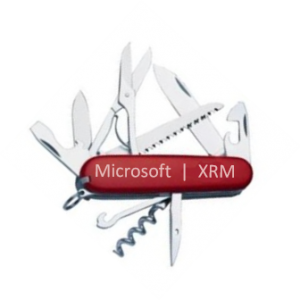Difference between revisions of "XRM"
| (2 intermediate revisions by the same user not shown) | |||
| Line 23: | Line 23: | ||
* [https://docs.microsoft.com/powerapps/developer/model-driven-apps/clientapi/clientapi-xrm Client API Xrm object] | * [https://docs.microsoft.com/powerapps/developer/model-driven-apps/clientapi/clientapi-xrm Client API Xrm object] | ||
* [https://docs.microsoft.com/powerapps/developer/model-driven-apps/clientapi/reference Client API Reference for model-driven apps] | * [https://docs.microsoft.com/powerapps/developer/model-driven-apps/clientapi/reference Client API Reference for model-driven apps] | ||
| + | * [https://www.itaintboring.com/dynamics-crm/from-xrm-to-power-platform/ From XRM to Power Platform] by Alex Shlega | ||
| + | * [https://www.linkedin.com/pulse/common-data-service-new-xrm-jukka-niiranen/ No, Common Data Service is not the new XRM] by Jukka Niiranen | ||
| + | * [https://jukkaniiranen.com/2018/03/yes-xrm-is-the-new-common-data-service/ Yes, XRM Is The New Common Data Service] by Jukka Niiranen | ||
Latest revision as of 21:15, 21 January 2021
This page is only for historical facts and for all former Microsoft Dynamics CRM fans.
Once upon a time there was software from Microsoft called Microsoft Dynamics CRM. Even though the name of the software included CRM, which is an acronym for Customer Relationship Management, this software could easily be used for modelling any relationship. By creating new entities and relationships in between new entity models could be set up by using configuration only.
Whatch the release video of xRM!
Why the X?
Some say that the x in xRM stands for "any" as in any relationship management. Some say it stands for extended relationship management.
Does it still consist?
xRM still consists as a concept. Microsoft Dynamics CRM transformed into Microsoft Dynamics 365 Customer Engagement and then into the Power Platform as model-driven apps built on the Power Platform and its data stored in Microsoft Dataverse.
The acronym can still be seen today in different parts of the Community, e.g. in the powerful XrmToolBox and in the name of the user group xRM Virtual User Group. It also still live in the background of the platform, not only conceptually in Microsoft Dataverse, but also e.g. in the Client API.
